As a professional supplier of quality sichuan pepper in China, Rushi has conducted research in various green sichuan pepper production areas, and formed the following report on the new production of green sichuan pepper in 2022: (The data is the Rushi team inspection statistics, for reference only).

The total production of green sichuan pepper in China is about 30,000 tons in 2021 and is expected to reach 45,000 tons in 2022. 2022 is a bumper year, with a 50% year-on-year increase in production compared to 2021.
Green sichuan pepper is a genus of Zanthoxylum in the family Rutacea, which is green or yellowish in color, and the fruit is round and full.
Green sichuan pepper is mainly produced in Yiliang County, Ludian County, Yongshan County, Qiaojia County, Jinyang County, Huaping County and other areas along the Jinsha River basin.
The Jinsha River basin is one of the earliest areas where green sichuan pepper was planted on a large scale, and every family in the area has planted green sichuan pepper, with trees that are 3, 5 or even 10 years old. According to the terrain spacing 3 meters-4 meters, planting 45-60 plants/mu, each household planting 200-800 plants about 4-16 acres.
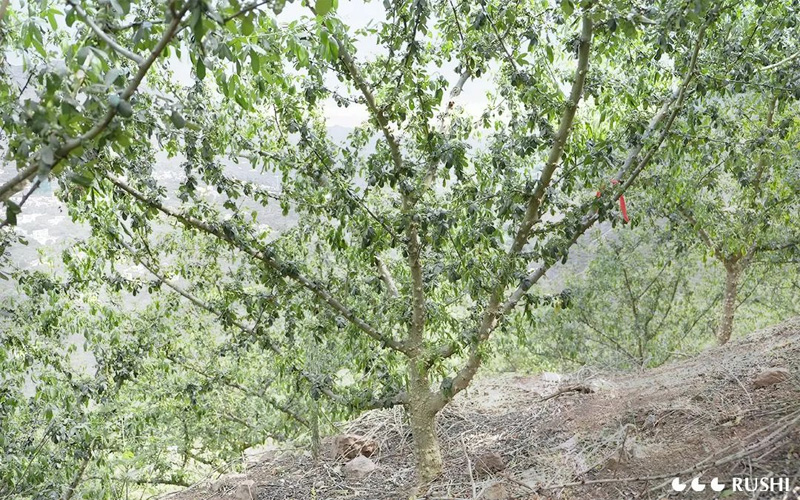
1)Germination period: buds grow and branches are sent out in March-April,
2)Flowering period: flowering and fertilization in May, ready for fruitin,
3)Fruiting period: fruiting starts in June,
4)Fruit expansion period: fruit growth is vigorous in June-July,
5)Oil gland growth period: fruit oil glands grow rapidly in July-August,
6)Harvesting period: harvesting starts in early August.
Taking some of the green sichuan pepper seedlings as an example, intact sichuan pepper seeds produced from sichuan pepper trees growing for more than 5 years at an altitude of 1800 meters were selected. The selected sichuan pepper seeds were buried with a mixture of farmyard manure and soil for 3-4 months, during which time the soil was kept moist. The following year, the seeds are dug up in March and sown and the seedlings are raised centrally and transplanted for 1 year of growth.

Green sichuan pepper planting needs to be dosed and fertilized. There are few pests and diseases, and the number of green sihcuan pepper applications is low. The application cycle varies from 0-2 times/year, mostly using lime sulphur compound, mainly in the fall after harvest to prevent aphids from attacking the branches. The fertilization cycle is 1-2 times/year, mainly using compound fertilizer, mud fertilizer and farmyard manure in spring and autumn, with an application amount of about 1.5-1.75kg/plant.
Green sichuan pepper is generally harvested from the beginning of July, or later in some areas, from August. After the end of September, the green sichuan pepper is over-matured, and the peel changes from green to green-brown and then to green to red sichuan pepper, which is commonly known as green prickly ash in the market.
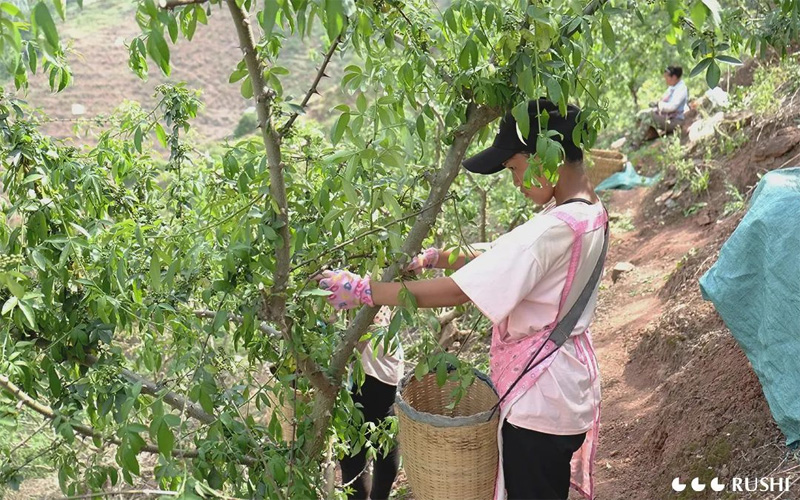
1. Preliminary shade-drying: picked green sichuan pepper spread open in a cool, dry and ventilated place to remove the external moisture (dew, rain) attached to the surface of the sichuan pepper. The next day when the sun is clear, drying in bad weather.

2. Sun-drying: the dried fresh sichuan peppers are spread on a clean ground and dried in the sun for a day.
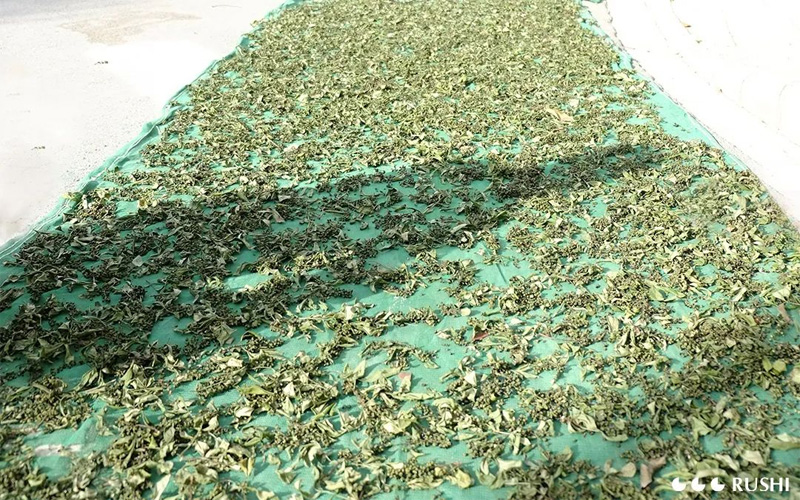
3. Drying: small dryer with electric heating, each small dryer has 3 layers, each layer can be flat 100 pounds of fresh green sichuan pepper, baking conditions 40 ℃, 24 hours. (Before and after drying material ratio: 4 to 1)
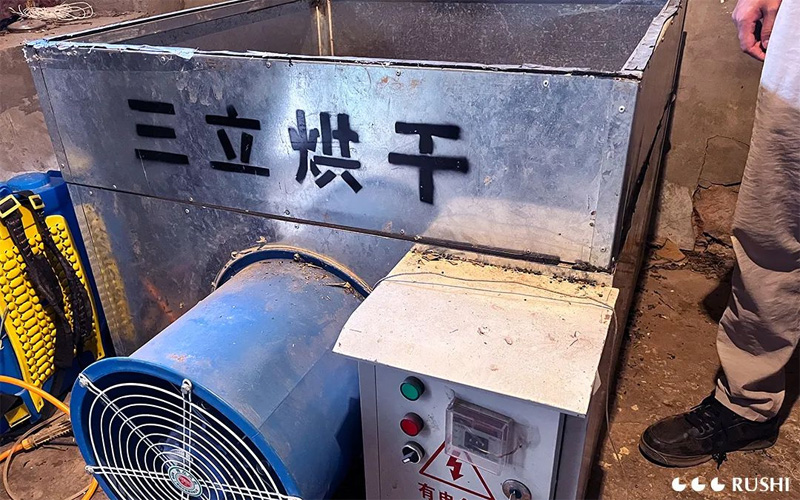
4. Preliminary screening: the sun-dried or dried green sichuan pepper will be selected a suitable small wooden stick to knock the sichuan pepper fruit off the sichuan pepper bunches. Windmill for preliminary screening of sichuan pepper leaves, branches, ash and other impurities. Sift down sichuan pepper seeds, closed exocarp of sichuan pepper, etc. with a sieve.

5.Storage: sichuan pepper farmers use woven bags (woven bags sources are fertilizer bags, urea bags, etc.) temporary storage at room temperature, if long-term storage will lead to excessive plasticizers in sichuan peppers, intermediate distribution traders use green woven bags plus inner film packaging form preservation.
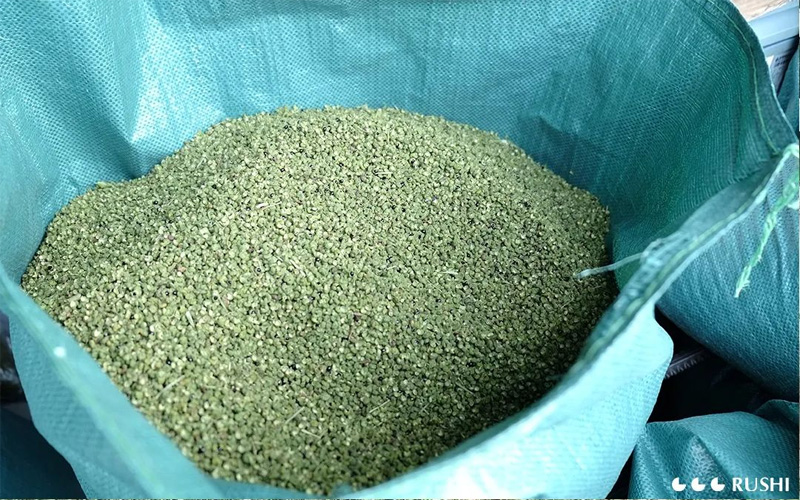
◭There are four main food safety risks in the growth, processing, storage,and trading of green sichuan peppers as follows:
1. Traceability risk: Green sichuan pepper planting is scattered and can’t be traced back to the farmers. Green sichuan pepper is mainly grown by thousands of farmers, and the market sales model limits the traceability to the source area of green sichuan pepper only, and can’t be traced to each specific household, there is no traceability risk.
2. Pesticide residue risk: pesticide toxicity varies, and improper use or failure to reach the degradation period may cause pesticide residues to exceed the standard. Green sichuan pepper usually uses two pesticides, lime sulphur and acetamiprid in the planting process, both of which are low toxicity pesticides.
3. Primary processing risk: Foreign matters are easily brought in or benzo(a)pyrene is produced during the preliminary processing. Drying, sun-drying process will have poultry manure, hair, soil and other foreign matters brought into the process. Electric drying process many times after drying on the stainless steel mesh tray will be residual sichuan pepper grease, long time high temperature heating may produce benzo(a)pyrene.
4. Storage risk: sichuan pepper farmers are not standardized in storage, which is easy to cause plasticizer exceed the standard. Sichuan pepper farmers use fertilizer, urea bags and other woven bags for sichuan pepper, if long-term storage may cause plasticizer in woven bags dissolved in sichuan pepper grease, resulting in plasticizer exceeds the standard.
